We use cookies to make your experience better.
To comply with the new e-Privacy directive, you agree to the privacy policy and our use of cookies.
Intel
Intel Core Ultra 5 245KF processor 24 MB Smart Cache Box
SKU
BX80768245KF
In Stock
Boxed Intel® Core™ Ultra 5 processor 245KF (24M Cache, up to 5.20 GHz) FCLGA18W

Next Day (UK) Delivery offered on stock items
| Processor | |
|---|---|
| Processor generation | Intel Core Ultra (Series 2) |
| Processor manufacturer | Intel |
| Cooler included | No |
| Processor codename | Arrow Lake |
| Processor cache | 24 MB |
| Processor ARK ID | 241066 |
| Processor model | 245KF |
| Processor operating modes | 64-bit |
| Processor boost frequency | 5.2 GHz |
| Stepping | B0 |
| Processor family | Intel Core Ultra 5 |
| Processor cores | 14 |
| Box | Yes |
| Processor socket | LGA 1851 (Socket V1) |
| Processor cache type | Smart Cache |
| Performance cores | 6 |
| Efficient cores | 8 |
| Performance-core boost frequency | 5.2 GHz |
| Performance-core base frequency | 4.2 GHz |
| Efficient-core boost frequency | 4.6 GHz |
| Efficient-core base frequency | 3.6 GHz |
| Processor base power | 125 W |
| Maximum turbo power | 159 W |
| Maximum number of DMI lanes | 8 |
| AI software frameworks supported by CPU | DirectML, OpenVINO, Windows ML, ONNX RT, WebNN |
| Neural processor unit (NPU) | |
| Neural processor unit (NPU) | Intel AI Boost |
| Sparsity support | Yes |
| Windows Studio effects support | Yes |
| AI software frameworks supported by NPU | DirectML, OpenVINO, Windows ML, ONNX RT, WebNN |
| Total processor performance up to | 22 TOPs |
| NPU performance up to | 13 TOPs |
| Memory | |
| Maximum internal memory supported by processor | 192 GB |
| Memory types supported by processor | DDR5-SDRAM |
| Memory clock speeds supported by processor | 6400 MHz |
| Memory channels | Dual-channel |
| Graphics | |
| Discrete graphics card | No |
| On-board graphics card model | Not available |
| On-board graphics card | No |
| Discrete graphics card model | Not available |
| Technical details | |
| Thermal solution specification | PCG 2020A |
| Intel® Secure Key | Yes |
| Thermal Monitoring Technologies | Yes |
| Intel® Turbo Boost Technology | 2.0 |
| Intel Trusted Execution Technology | Yes |
| Intel® AES New Instructions (Intel® AES-NI) | Yes |
| Idle States | Yes |
| Execute Disable Bit | Yes |
| Enhanced Intel SpeedStep Technology | Yes |
| PCI Express slots version | 4.0, 5.0 |
| Supported instruction sets | AVX 2.0, SSE4.1, SSE4.2 |
| Scalability | 1S |
| L2 cache | 26624 KB |
| Intel VT-x with Extended Page Tables (EPT) | Yes |
| Embedded options available | No |
| Intel Virtualization Technology for Directed I/O (VT-d) | Yes |
| Intel 64 | Yes |
| Status | Launched |
| Market segment | Desktop |
| Launch date | Q4'24 |
| Intel Virtualization Technology (VT-x) | Yes |
| Processor cache type | Smart Cache |
| Memory speed (max) | 6400 MHz |
| Features | |
|---|---|
| Maximum number of PCI Express lanes | 24 |
| Processor ARK ID | 241066 |
| Thermal solution specification | PCG 2020A |
| Thermal Monitoring Technologies | Yes |
| Idle States | Yes |
| Execute Disable Bit | Yes |
| PCI Express slots version | 4.0, 5.0 |
| Supported instruction sets | AVX 2.0, SSE4.1, SSE4.2 |
| Scalability | 1S |
| Embedded options available | No |
| Market segment | Desktop |
| Harmonized System (HS) code | 8542310050 |
| Export Control Classification Number (ECCN) | 5A992C |
| Commodity Classification Automated Tracking System (CCATS) | 740.17B1 |
| Use conditions | PC/Client/Tablet |
| Direct Media Interface (DMI) Revision | 4.0 |
| Processor special features | |
| Intel Virtualization Technology for Directed I/O (VT-d) | Yes |
| Intel 64 | Yes |
| Intel® Speed Shift Technology | Yes |
| Intel® OS Guard | Yes |
| Intel® Secure Key | Yes |
| Intel® Turbo Boost Technology | 2.0 |
| Intel Trusted Execution Technology | Yes |
| Intel® AES New Instructions (Intel® AES-NI) | Yes |
| Enhanced Intel SpeedStep Technology | Yes |
| Intel VT-x with Extended Page Tables (EPT) | Yes |
| Intel Virtualization Technology (VT-x) | Yes |
| Intel® Boot Guard | Yes |
| Intel® Volume Management Device (VMD) | Yes |
| Intel® Deep Learning Boost (Intel® DL Boost) on CPU | Yes |
| Mode-based Execute Control (MBE) | Yes |
| Intel® Thunderbolt 4 | Yes |
| Intel® Control-flow Enforcement Technology (CET) | Yes |
| Intel® Thread Director | Yes |
| Intel® Standard Manageability (ISM) | Yes |
| Operational conditions | |
| Maximum operating temperature | 105 °C |
| Logistics data | |
| Harmonized System (HS) code | 8542310050 |
| Other features | |
| Maximum internal memory | 192 GB |
| L2 cache | 26624 KB |
You may also be interested in
| Product |
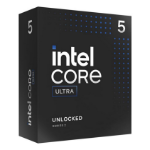
Hot Product
Intel Core Ultra 5 245KF processor 24...
Login for pricing
|
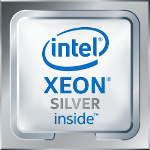 Intel Xeon 4208 processor 2.1 GHz 11 MB
Login for pricing
Intel Xeon 4208 processor 2.1 GHz 11 MB
Login for pricing
|
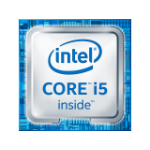 Intel Core i5-9500 processor 3 GHz 9 M...
Login for pricing
Intel Core i5-9500 processor 3 GHz 9 M...
Login for pricing
|
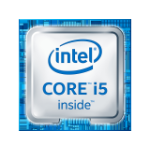
Recommended
Intel Core i5-9500TE processor 2.2 GHz...
Login for pricing
|
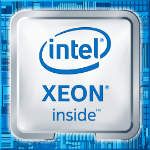
Popular
Intel Xeon W-2223 processor 3.6 GHz 8....
Login for pricing
|

Bestseller
AMD Ryzen 7 5800X processor 3.8 GHz 32...
Login for pricing
|
|---|---|---|---|---|---|---|
| SKU |
BX80768245KF
|
CD8069503956401
|
CM8068403362610
|
CM8068404404726
|
CD8069504394701
|
100-100000063WOF
|
| Manufacturer |
Intel
|
Intel
|
Intel
|
Intel
|
Intel
|
AMD
|
| Processor lithography |
N/A
|
up to 22nm
|
up to 22nm
|
up to 22nm
|
up to 22nm
|
up to 22nm
|
| Processor family |
Intel Core Ultra 5
|
Intel Xeon Silver
|
Intel Core i5
|
Intel Core i5
|
Intel Xeon W
|
AMD Ryzen 7
|
| Processor socket |
LGA 1851 (Socket V1)
|
LGA 3647 (Socket P)
|
LGA 1151 (Socket H4)
|
LGA 1151 (Socket H4)
|
LGA 2066 (Socket R4)
|
Socket AM4
|
| Processor cores |
14
|
8
|
6
|
6
|
4
|
8
|
| On-board graphics card |
N
|
N
|
Y
|
Y
|
N
|
N
|
| Discrete graphics card |
N
|
N
|
N
|
N
|
N
|
N
|
| Cooler included |
N
|
N
|
N
|
N
|
N
|
N
|
| Package type |
Box
|
Tray
|
Tray
|
Tray
|
Tray
|
Box
|

